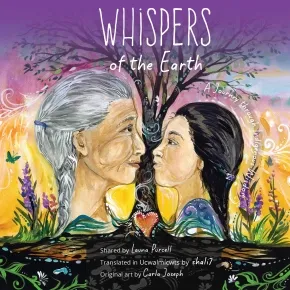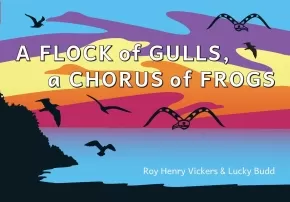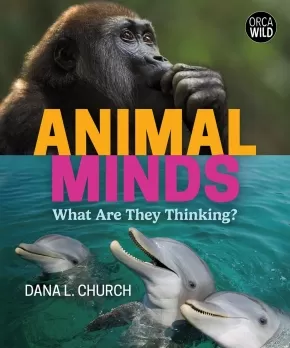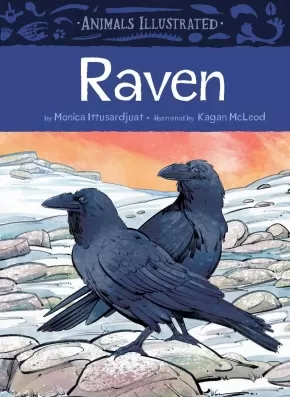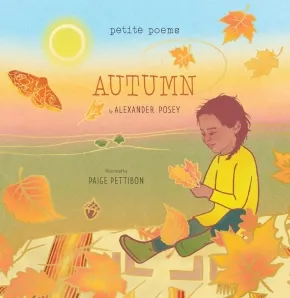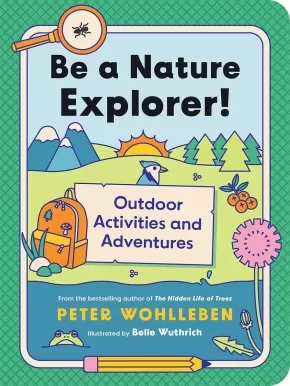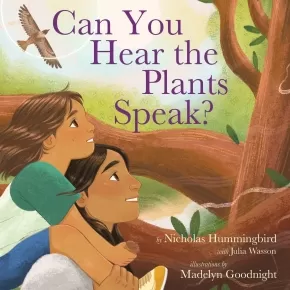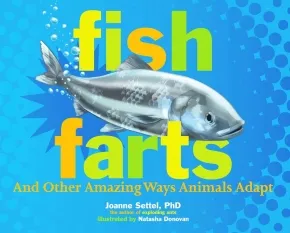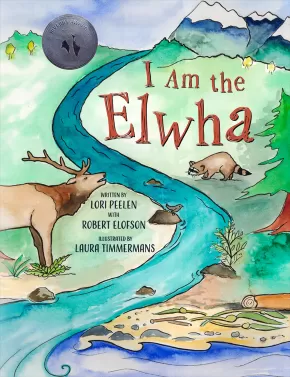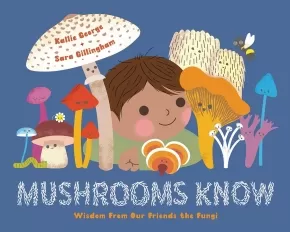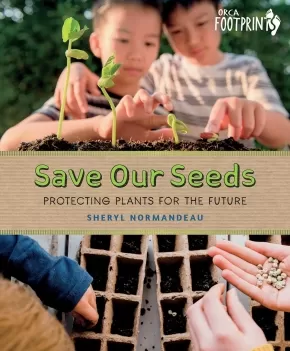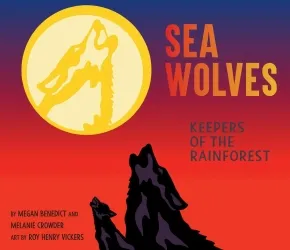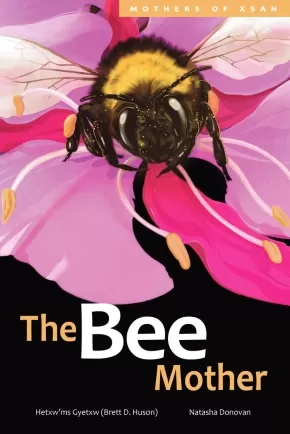
Science and Technology
16
-
30
of
427 Results;
Sort By
Go To
of 29
Whispers of the Earth: A Journey through Indigenous Wisdom
$29.00
Artists:
Format:
Paperback
Text Content Territories:
Indigenous Canadian; First Nations; Salish; Interior Salish; St'at'imc (Lillooet, Lil'Wat);
ISBN / Barcode: 978-1-73869-534-8
Synopsis:
Synopsis:
Prepare to embark on a journey rich with the wisdom of our ancestors and the secrets shared by Mother Earth.
In this children’s book, you will follow a path once tread by those before us, where the songs of the trees, the dance of the rivers, and our stories are carried by the wind. These teachings are invaluable treasures passed down through generations.
You’ll discover the language of animals, the lessons of plants, and the wisdom of the land. If you listen closely, you will hear the “Whispers of the Earth,” guiding you on this incredible adventure.
Educator Information
Recommended for kindergarten to grade 7.
Carl Sam advised on the language, and is “Ha7li” of the Bear Clan from Skookumchuck, part of St’at’icmulh Nation, sometimes referred to as the Interior Salish. Through this book, he shares elements of the Ucwalmícwts language.
Includes some words in Ucwalmícwts.
Additional Information
60 pages | 20 × 20 × 1 cm | Paperback | Printed locally on 100% post-consumer recycled paper.
A Flock of Gulls, a Chorus of Frogs (BB)
$14.95
Format:
Board Book
Text Content Territories:
Indigenous Canadian;
Grade Levels: Preschool;
ISBN / Barcode: 9781990776502
Synopsis:
Synopsis:
Learn fun names for animal groups of the West Coast with a sturdy board book featuring the illustrations of Indigenous artist Roy Henry Vickers.
Bright blocks of colour and tactile embossed pages bring the natural world of the wild West Coast to life. Accompanied by a rhythmic, rhyming text, this board book will entertain babies, toddlers, and adults alike as they discover that orcas leap and dive in a pod, a bunch of sea lions are called a bob, geese make up a wedge, a swamp full of croaking frogs form a chorus, a jumble of jellies are called a bloom—and more!
A Flock of Gulls, a Chorus of Frogs is a vibrant addition to this bestselling, award-winning First West Coast Book series, perfect for storytime and supporting language development in babies and toddlers.
Educator & Series Information
This book is a part of the First West Coast Books series.
Recommended for ages 3 and under.
Additional Information
24 pages | 7.25" x 5.00" | Board Book
Animal Minds: What Are They Thinking?
$24.95
Format:
Hardcover
ISBN / Barcode: 9781459834156
Synopsis:
Synopsis:
A deep dive into the minds of animals and how they think.
Wouldn't it be amazing to see inside the mind of a lion, a gorilla, an octopus or even a bee? In Animal Minds: What Are They Thinking?, author Dana L. Church looks at how scientists are doing just that. Their research shows that a wide variety of species have unique personalities, impressive memories, counting abilities, and incredible problem-solving skills.
Meet the scientists who study the minds of animals, discover the similarities and differences between the minds of different species and learn how they compare to our own. From dolphins to dung beetles, tigers to turkey vultures, Animal Minds shows that we are only beginning to scratch the surface when it comes to revealing the amazing inner worlds of the thousands of different creatures with whom we share this planet.
Reviews
“The book includes questions and answers with women scientists in the field, sidebars, and eye-catching full-page color photos. A good starting book on animal cognition for any young animal lover who has wondered if animals are more like humans than we think.”— Booklist
“Full-colour photos and illustrations are well-chosen and positioned to enhance understanding…Young readers…will find Animal Minds: What Are They Thinking? intriguing. It might help fill [a] knowledge gap and offer inspiration for further investigation. Highly recommended.”— CM: Canadian Review of Materials
Educator & Series Information
Recommended for ages 9 to 12.
This book is part of the Orca Wild series that examines the intricacies of animals, ecosystems, humans and our relationships to each other.
Additional Information
96 pages | 7.50" x 9.00" | Hardcover
Animals Illustrated: Raven
$17.95
Artists:
Format:
Hardcover
Text Content Territories:
Indigenous Canadian; Inuit;
ISBN / Barcode: 9781772275230
Synopsis:
Synopsis:
Perfect for nature-loving young readers who want to expand their knowledge of Arctic animals beyond polar bears and walruses!
Animals Illustrated mixes fun-filled animal facts suitable for the youngest of readers with intricately detailed illustrations to create a unique and beautiful collection of children’s non-fiction books about Arctic animals.
Each volume contains first-hand accounts from authors who live in the Arctic, along with interesting facts on the behaviours and biology of each animal. In this book, kids will learn what ravens eat, where they live, how they raise their babies, and other interesting facts, like the fact that ravens have one of the biggest brains of any bird and that they can use tools!
Educator & Series Information
Recommended Ages: 6-8
This book is part of the non-fiction Animals Illustrated series, which mixes fun-filled animal facts suitable for the youngest of readers with intricately detailed illustrations to create a unique and beautiful collection of children’s non-fiction books on Arctic animals. Each volume contains firsthand accounts from authors who live in the Arctic, along with interesting facts on the behaviours and biology of each animal.
Reading Levels:
Fountas & Pinnell Text Level Gradient: P
Guided Reading Level: P
This book is available in French: Corbeau.
Additional Information
28 pages | 6.50" x 9.00" | Hardcover
Autumn
$19.99
Artists:
Format:
Hardcover
Text Content Territories:
Indigenous American; Native American; Muscogee (Creek);
Grade Levels: Preschool; Kindergarten;
ISBN / Barcode: 9781949480580
Synopsis:
Synopsis:
Discover the power of poetry in this simple, modern introduction to Indigenous poet Alexander Posey, featuring an ode to autumn and the changing seasons
Autumn depicts a dreamy fall day full of jaybird songs and scarlet leaves dancing through the air. In this poem, Muscogee poet Alexander Posey celebrates the changing of the seasons as the golden sun sets on summer and the world prepares for a time of rest. With stunning illustrations from Salish artist Paige Pettibon and interactive back matter that encourages young readers to create their own poetry, this accessible picture book is a joy for young poets and their parents alike.
Reviews
"A dreamy, succinct poem across many pages that all together encapsulates the sense of fall. A strong first purchase. The poem and artwork, which create an exquisite sense of a child’s joy in playing on an autumn afternoon, will appeal to all ages." — School Library Journal
Educator Information
Recommended for ages 3 to 5.
Additional Information
24 pages | 8.00" x 8.00" | Hardcover
Be a Nature Explorer!: Outdoor Activities and Adventures
$17.95
Artists:
Format:
Paperback
ISBN / Barcode: 9781771649698
Synopsis:
Synopsis:
For kids ages 6 to 10, this nature activity guide is the perfect companion for every child’s next outdoor adventure, from the New York Times bestselling author of The Hidden Life of Trees and Can You Hear the Trees Talking?
An excellent resource for parents, teachers, and curriculums ranging from outdoor education to homeschool and forest school.
Whether you are in the forest, in your own backyard, or in the city, there are so many exciting ways to engage with nature—and forester Peter Wohlleben has the best ideas for doing so. With Be A Nature Explorer!, kids will learn how to press flowers, harvest algae, skip stones, observe spiders, and even how to build their own tiny sailboat.
This ultimate kids' nature book features:
- 52 short, fun, and hands-on activities to help kids explore and discover the outdoors—one for each week of the year.
- Portable format: This lightweight paperback is designed to easily throw in a backpack and refer to on adventures.
- STEM learning and outdoor skill development: Kids will learn how to decode nature’s messages, identify plants and animal tracks, record and preserve their finds, and more.
Packed with activities that will fill kids with wonder and confidence in the outdoors, readers will be dipping in and out of Be A Nature Explorer! all year round.
Educator Information
Recommended for ages 6 to 10.
Curriculum Connections: Nature and the Environment, Outdoor Learning
Published in partnership with the David Suzuki Institute.
Additional Information
100 pages | 6.00" x 8.00" | Paperback
Can You Hear the Plants Speak?
$24.99
Artists:
Format:
Hardcover
Text Content Territories:
Indigenous American; Native American; Apache; Cahuilla;
ISBN / Barcode: 9780063221284
Synopsis:
Synopsis:
Our people believe spirit lives in everything.
Mountain, river, wind, tree.
Come, take a walk with me.
What do we learn from plants when we listen to them speaking? Indigenous plantsman Nicholas Hummingbird calls on the legacy of his great-grandparents to remember how one drop of rain, one seed, one plant can renew a cycle of hope and connection—for him and for each of us.
Perfect for readers of Sy Montgomery, debut authors Nicholas Hummingbird and Julia Wasson joyfully proclaim even the youngest person can be an earth protector. With gorgeous illustrations from Rock Your Mocs artist Madelyn Goodnight, Can You Hear the Plants Speak? encourages us to engage with the natural world.
Educator Information
Recommended for ages 4 to 8.
Additional Information
40 pages | 10.00" x 10.00" | Hardcover
Fish Farts: And Other Amazing Ways Animals Adapt
$23.99
Artists:
Format:
Hardcover
ISBN / Barcode: 9781665918831
Synopsis:
Synopsis:
From popping off a tail to rolling around in dung to farting to send a message, this funny and informative nonfiction picture book shows the many unusual ways animals adapt to their surroundings!
Animals survive and thrive in astounding ways: they trick, trap, and fry predators; feed on other animals’ poop and skin; and use electric zaps, slime, and other unexpected methods to communicate.
Featuring animals like Komodo dragons, bombardier beetles, and capuchin monkeys, this fact-filled book explores the surprising, exciting, and sometimes hilarious ways that animals adapt.
Reviews
"Welcome to the wonderful world of animal slime, poop, gas, vomit, and gross parenting practices. . . . [Settel] shows a knack for slipping in facts as likely to intrigue as revolt . . . . Donovan tones down the gross in her brightly hued animal portraits enough to elicit more cooing than spewing. . . . A crowd-pleasing way to deliver some substantial (info) dumps."— Kirkus Reviews, 5/1/24
"Donovan's digital art is brightly colored and does a good job depicting important points from the text, such as a giraffe's blue tongue (which acts as a sunscreen) wrapped around a branch. The gross-out factor is prominent throughout. . . . Appended with a glossary, this should intrigue borrowers and lead to further investigation."— Booklist, 5/15/24
Educator Information
Recommended for ages 7 to 10.
Additional Information
48 pages | 10.00" x 8.00" | Hardcover
Get Outside!: How Humans Connect with Nature
$21.95
Format:
Hardcover
ISBN / Barcode: 9781459836877
Synopsis:
Synopsis:
We know spending time in nature is good for us, but why? And how did people become so disconnected from the natural world, anyway?
Get Outside! How Humans Connect with Nature explores the important relationship between people and nature. It asks big questions, like Are humans part of nature or separate from it? and Do all people have equal access to nature? By discussing global issues such as the climate crisis and environmental racism, the book shows us that, by strengthening our relationship with the natural world, we can learn how to take care of the environment and to let the environment take care of us too.
Reviews
“Payne argues that humans are part of nature and should be engaging with the natural world more often and more effectively…Informative and likely to spur readers to forge a stronger bond with the natural world.”— Kirkus Reviews
“The text is visually striking…This book should appeal to readers interested in or curious about the outdoors and could lead to deeper engagement or activism.”— School Library Journal (SLJ)
Educator & Series Information
Recommended for ages 9 to 12.
This book is part of the Orca Footprint series.
Reading Levels:
Fountas & Pinnell Text Level Gradient: X
Lexile measure: 1030L
Guided Reading Level: X
Additional Information
48 pages | 8.00" x 9.50" | Includes 49 colour photographs, 1 index, 1 bibliography | Hardcover
I Am the Elwha (PB)
 $14.95
$14.95

Artists:
Format:
Paperback
Text Content Territories:
Indigenous American; Native American; Salish; Coast Salish; Klallam (Clallam); Lower Elwha Klallam Tribe;
ISBN / Barcode: 9781771746311
Synopsis:
Synopsis:
"I am the Elwha, rushing down to the sea. I am the Elwha, wild and free."
The Elwha River flows 72km (45 miles) from its source in the Olympic Mountains to the Strait of Juan de Fuca in the Pacific Northwest. Uniquely, it hosts all six salmon species (Pink, Chinook, Coho, Sockeye, Steelhead, and Chum) as well as several species of trout.
In 1911, two dams were built on the river. The dams blocked the migration routes of the salmon and dramatically altered the entire river ecosystem for 100 years. In 2012, the dams were decommissioned and the world's largest dam removal and habitat restoration project began. In this lyrical and beautifully illustrated book, the author chronicles the history of the Elwha.
Narrated by the powerful voices of plants and animals that inhabit the river ecosystem, the dam builder, a worker, members of the Klallam Tribe, and the river itself, this story celebrates the ongoing rewilding of this special environment and offers a welcome to all the creatures who are coming home.
To learn more visit: www.elwha.org
Awards
- 2021 Riverby Award for Young Readers
Reviews
“I Am the Elwha is a powerful read about a powerful river and those who value and protect it." – Raina Delisle, Hakai Magazine
Educator Information
Recommended for grades 3 to 7.
At the back of the book are three pages of cultural, scientific, and historical information that discuss the following:
- the importance and symbolism of salmon to the Lower Elwha Klallam Tribe and other Coastal Salish Tribes
- facts about the six species of salmon found in the Elwha River (Chinook, Pink, Chum, Sockeye, Coho, and Steelhead)
- the history of the Elwha River and its status today
Keywords / Subjects: The Elwha River, Rivers, Dams, History, Environmental Awareness, Lower Elwha Klallam Tribe, Coast Salish, Native American, Culture, Washington, Animals, Salmon, First Salmon Ceremony, Plants, Nature, Settlers, Social Responsibility, Environmental Activism, Poetry.
Additional Information
32 Pages | 8.5" x 11" | ISBN: 9781771746311 | Second Edition | Paperback
Authenticity Note: This lyrical story, which chronicles the history of the Elwha River, is written by Lori Peelen. Robert Elofson, Tribal Elder and Harvest Manager in the Natural Resources Department for the Lower Elwha Klallam Tribes, approved Lori's work and contributed pages of back matter at the end of the work. Lori's story was further approved by Frances Charles, the Tribal Councilwoman for the Lower Elwha Klallam Tribe, after the entire council read and approved it.
The Canadian Content label has been applied because the illustrator of this work is Canadian.
Making Rope Out of Bearded Sealskin
$15.95
Artists:
Format:
Paperback
Text Content Territories:
Indigenous Canadian; Inuit;
ISBN / Barcode: 9781774507971
Synopsis:
Synopsis:
Learn all about the process of making rope from bearded seal skin! Rope is a very useful tool and is used by Inuit for many things. From removing the blubber to hanging the rope to dry, this introductory guide takes readers through a step-by-step process for making rope from bearded seal skin.
Educator Information
Recommended for ages 6 to 8.
Making Rope Out of Bearded Sealskin gives simple, step-by-step instructions on how to make rope out of bearded sealskin and describes other things Inuit make out of sealskin.
Additional Information
24 pages | 8.00" x 10.00" | Paperback
Mushrooms Know: Wisdom From Our Friends the Fungi
$23.95
Artists:
Format:
Hardcover
ISBN / Barcode: 9781778400773
Synopsis:
Synopsis:
An adorable, STEM-themed picture book for kids 4 to 8 that reveals the wisdom mushrooms have to teach us.
Mushrooms always wear their thinking caps. They know so many things. This vibrant and informative book shares the fascinating lessons that fungi can teach us: that small can be mighty, being unique is a reason to celebrate—and staying connected is key. Sara Gillingham’s lively art and Kallie George’s charming text captures the wondrous world of mushrooms, and everything we can learn from it.
Featuring over fifty kinds of mushrooms, Mushrooms Know shares:
- Engaging informational side bars with wild facts about mushrooms (such as how some are so strong they can grow through cement, and others can glow in the dark!)
- Backmatter that dives further into the science
- Important life lessons (including how to help each other and keep our homes clean)
For budding mycologists and forest adventurers alike, this is a must-have addition to the science and nature bookshelf.
Educator Information
Recommended for ages 4 to 8.
Curriculum Connections: Nature and the Environment / Ecosystems / Life Cycles / Interdependence / STEM
Additional Information
40 pages | 10.00" x 8.00" | Hardcover
Save Our Seeds: Protecting Plants for the Future
$21.95
Format:
Hardcover
ISBN / Barcode: 9781459836976
Synopsis:
Synopsis:
Small but mighty. Learn about the importance of seeds and how saving and conserving them for the future is key to sustaining healthy life on the planet.
Seeds are essential to all life on the planet. They provide us with food, clothing and other materials we need and use every day. Without seeds, the planet wouldn't have as many species of plants as we do now. Without plants, there wouldn't be oxygen to breathe and there would be less food for all life on Earth. But today seeds are under threat, mostly from human activity. The climate crisis and food insecurity mean protecting our seeds is more important than ever. In Save Our Seeds, young readers will hear from experts in the field and learn how to take action to preserve seeds for the future.
Reviews
“The latest volume in the well-regarded Orca Footprints series presents a broad array of information about seeds…Exploring seeds more broadly than most children’s books on the topic, this volume encourages readers to collect, plant, and share seeds—a small, yet powerful resource.”- Booklist
“Author and master gardener Sheryl Normandeau… emphasizes the importance of saving and conserving seeds for the future in order to sustain healthy life on Earth. Highly Recommended.”- CM: Canadian Review of Materials
Educator & Series Information
Recommended for ages 9 to 12.
This book is part of the Orca Footprint series.
Reading Levels:
Fountas & Pinnell Text Level Gradient: X
Lexile measure: 1040L
Guided Reading Level: X
Additional Information
48 pages | 8.00" x 9.50" | Includes 60 colour photographs, 1 index, 1 bibliography | Hardcover
Sea Wolves: Keepers of the Rainforest
$24.99
Format:
Hardcover
Text Content Territories:
Indigenous American; Indigenous Canadian;
ISBN / Barcode: 9781662620119
Synopsis:
Synopsis:
This lyrical, stunningly illustrated book explores the sea wolf—an apex marine mammal evolved from the gray wolf—as it navigates the coastline, eats seafood, and lives its extraordinary, unusual life.
Sea Wolves: Keepers of the Rainforest is the astonishing story of a wolf species that calls the shores of western Canada and southeastern Alaska home. Here, wolves crack clams, feast on fish roe, swipe salmon from rivers, and swim miles between islands—as long observed by the First Nations communities that have lived alongside them for thousands of years.
However, with the rise of industrial logging, pipeline projects, and other threats, sea wolves face a troubled future. Wildlife experts and First Nations members agree: these majestic creatures are a vital part of the ecosystem and need to be protected.
Through beautiful verse and striking illustrations, Sea Wolves captures the fascinating life of an animal with great cultural and scientific significance—one that will inspire awe in young readers.
Educator Information
Recommended for ages 4 to 8.
Story Locale: Coast of western Canada and southeastern Alaska; British Columbia; First Nations territory
Additional Information
32 pages | 11.31" x 9.81" | Hardcover
The Bee Mother
$24.95
Artists:
Format:
Hardcover
Text Content Territories:
Indigenous Canadian; First Nations; Gitxsan (Gitksan);
ISBN / Barcode: 9781774920800
Synopsis:
Synopsis:
Discover the important role of bumblebees, honeybees, and wasps as pollinators in this colourful picture book for young scientists.
Learn about the life cycles of different kinds of bees in this enlightening picture book.
As flowers and trees begin to bud and bloom, Nox Ap, the bee mother, emerges from her winter sleep. To the Gitxsan, she is nature’s gardener. Without her hard work as a pollinator, we could not enjoy the fruits of strawberries and huckleberries. Follow her life from the first thaw of spring to the end of autumn.
In the seventh book of Hetxw'ms Gyetxw (Brett D. Huson)’s Mothers of Xsan series, readers will discover the important role of the bumblebee, the honeybee, and the yellow jacket wasp in the Xsan ecosystem.
Reviews
“Described with delicious adjectives (“pillowy moss floor”) that enrich the story...lushly colored and detailed; the fur on the bumblebee looks ready to be brushed. This great blend of nonfiction with narrative and amazing illustrations will engage readers in the life of bees and their significance to the Gitxsan Nation. A solid general purchase.” — School Library Journal
Educator & Series Information
Recommended for ages 9 to 12.
This book is part of the Mother of Xsan series, which uses striking illustration and lyrical language to bring the poetry of the Xsan ecosystem to life. It is the seventh book in the series.
Reading Level: Fountas & Pinnell T
Lexile® Framework for Reading: 1140L
Recommended in the Indigenous Books for Schools catalogue as a valuable resource for English Language Arts and Science in grades 2 to 6.
Themes: Animals, Land, Language, Sustainability, Life Cycles, Biodiversity, Interdependence, Seasons
Additional Information
32 pages | 6.50" x 10.00" | Hardcover
Sort By
Go To
of 29

